Big(ger) prices, fresh interest, shrinking supply—that’s the Saab cocktail as we head into our 12th year since the last new car rolled out of Sweden.
Check out the Hagerty Media homepage so you don’t miss a single story, or better yet, bookmark it.
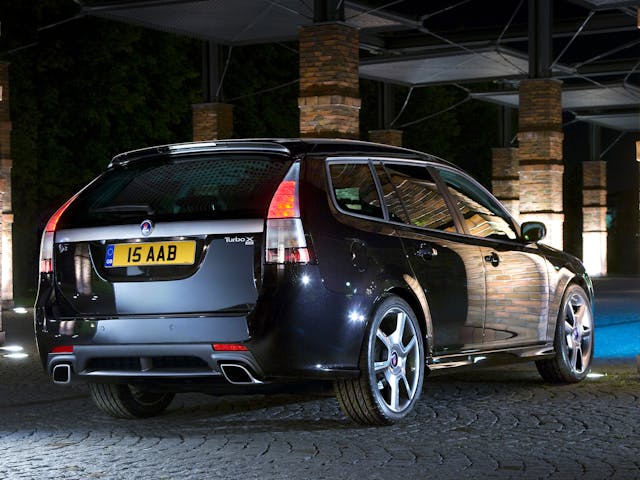
It’s fun to enjoy something before it gets popular. Beyond the intoxicating sense of superiority that comes with the territory, enjoying the esoteric is generally a comparably thrifty endeavor. Just ask Saab devotees; while the collector car market erupted around them, the Saab community enjoyed IKEA pricing for its favorite cars.
As the reservoir of previously underappreciated collector cars dried up sometime in early 2021, people started to notice Saabs as a value proposition. Prices gradually rose as ’80s Saabs were labeled a solid alternative to the more expensive collector stuff from Germany. Suddenly, September 2021 saw someone pay $57,750 for a clean 1990 900 SPG on Bring a Trailer.
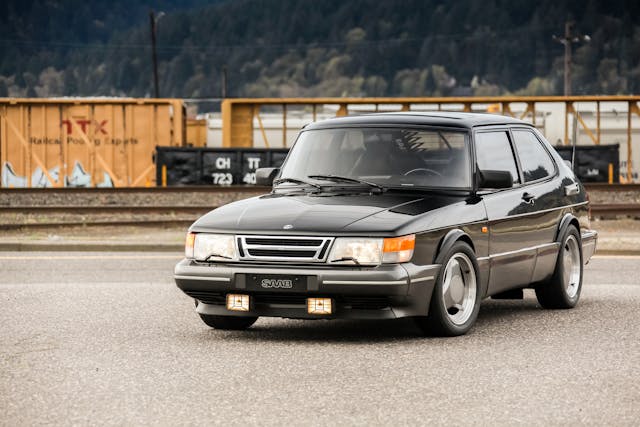
This was a record-setting price paid for a Saab of any type on the popular auction platform, beating out the previous record holder by almost $23,000. An outlier sale at the time, but people began to pay attention. The most desirable iterations of the 900 were hitting boost, with another clean 900 SPG selling for $59,850 this past April. Another outlier?
It was, right up until this past August when a 246-mile 1987 Saab 900 Turbo Convertible sold for a stunning $150,000 on Bring a Trailer. Born from Jets—and cost about the same, too.
We’re being a bit dramatic. Saab values have increased across the board, but the average price paid for the top 10 most expensive Saabs on BaT is $51,365 against Volvo’s $68,530 top-ten average and erstwhile rival BMW’s $457,000. These are just the flashiest sales: According to our data, average quote value for Saabs is up 25 percent from the summer of 2020. Still, the overwhelming majority of quoted values for a Saab of any type ranges between $8000 and $13,000.
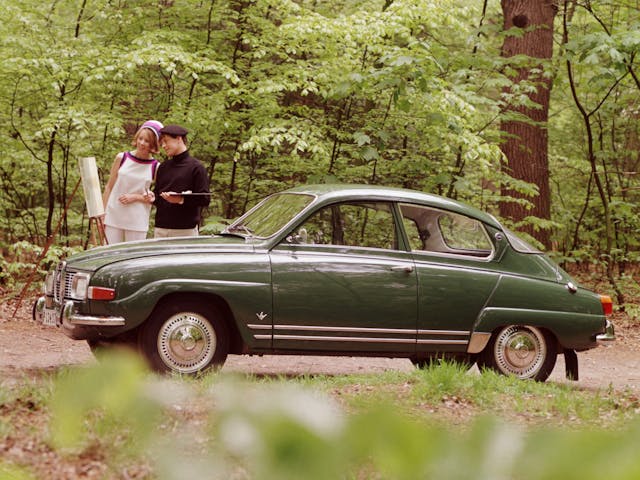
The treats from Trollhättan are still within the reach of most enthusiasts—but how has this affected the existing community? Early adopters are often burned when prices spike, as they might not be able to re-purchase, replace, or swap their car for another of the same ilk. For some, aggressive appreciation freezes their garage in amber.
“As a Saab enthusiast, I love it. But, as someone who is constantly looking for another Saab to add to the fleet, it’s troublesome of course,” said noted Saab cannonballer Nik Krueger. “I’m used to being able to pick up an SPG for $3000, $4000. As much as I would want one right now, I cannot justify an upper-teens, lower-twenties car.”
We chatted with Krueger and a cluster of other major Saabists at this year’s Saab Owners Convention, hosted at the newly opened Saab Heritage Car Museum in Sturgis, South Dakota. Many expressed the same frustrations as Krueger, pointing to Bring a Trailer’s magnetism for the cleanest cars and biggest prices.
“Bring a Trailer gets a lot of specialty cars, and they’re not all going to Saab enthusiasts,” explained Saab broker Randy Friedley. A former longtime Saab dealer, Friedley now sources clean Saabs for customers, moving somewhere between 50 and 75 cars a year. “Some of the higher-priced cars on Bring a Trailer are going to buyers who are interested in reselling the car soon after.
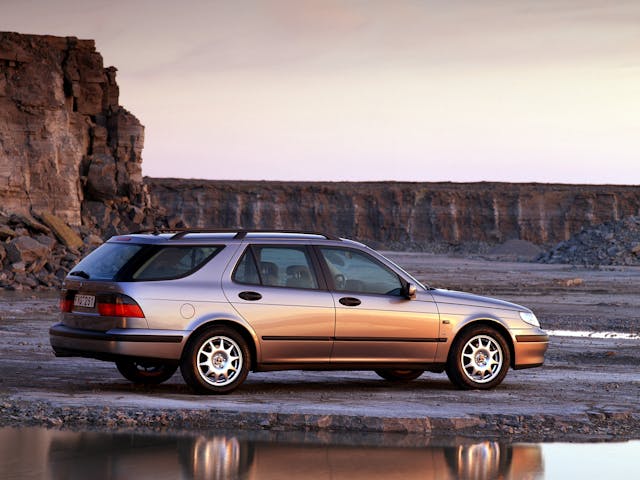
Part of this appreciation is simply a numbers game. As prices rise, so has interest in the defunct marque. According to our valuation team, quote volume is up 25 percent since the summer of 2020. In the real world, this means more demand for a limited stock of clean cars. “The level of enthusiasm for Saab is greater than it’s ever been as long as I’ve been in the business—even when Saab was alive,” said Friedley. “In fact, it might be a little bit better now as they’re getting harder to find.”
In other words, bigger price tags have only bolstered the community. “I don’t think it’s driving people away,” mused Tim Colbeck, former president and COO of Saab North America, and current president and CEO of Orio, the largest supplier of OE Saab parts. “It’s an interesting community; I think they are bonded by Saab and not by demographics, so there’s a portion of this community who can reach and get any Saab that comes to market.”
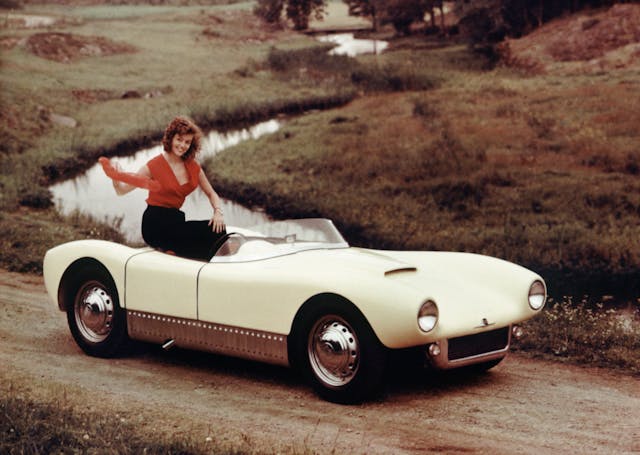
“There’s definitely a bit of a supply-and-demand thing happening here,” he continued. “The enthusiast group remains as big as it’s ever been, these pristine cars that are going for real high bucks are getting harder and harder to find.” We chatted at Orio’s pop-up stand inside the museum, just feet from one of six Saab Sonett Is. Around us, a shifting mass of Saab club members filtered between the museum’s collection of 100-plus cars.
According to the event organizers, 60 percent of the attendees were new to the convention. Outside, a harlequin potpourri of old and older Saabs gleamed in the Sturgis sun. “I don’t think a pristine Saab going to someone outside of the community is a loss. I think it is an opportunity to pull them into the community,” said Colbeck.
The demographics are shifting, if only just. Average insured age for Hagerty’s Saab policies stands at 59 years old, with only 10 percent of policyholders under the age of 40, with the same group holding 28 percent of quotes, a one percent boost since summer 2020. 29 percent of owners are in their 60s.
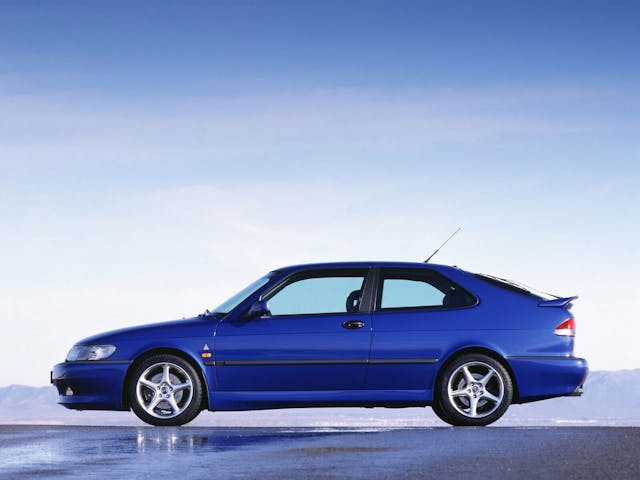
The cars aren’t getting any younger, either. “This is it. The cars that are left are the only ones left in the future. The low-mileage cars, they’re only going to go up,” predicts Friedley. “The last Saabs were [made in] 2011. Every year there will be fewer on the road—crashed, parked, or used as parts—and the number of Saabs that are out there is shrinking. I’ve got more requests than cars; the market should remain strong on that alone.”
Talking to the assembled fanatics, it does seem like there are no bad Saabs, just better ones. Friedley was quick to highlight wagons, Turbo Xes, SPGs, Viggens, and special editions as the hot ticket items. “And anything with a stick—especially wagons,” he said with finality. And, as there isn’t the widest range of cars to choose from—Saab had a rather, ah, “streamlined” product tree—there are few hidden gems. “Most Saab enthusiasts are intellectual and persnickety. They’ve read everything there is, they probably know just about everything there is to know [about these cars] and as much as me.”
Big(ger) prices, fresh interest, shrinking supply—that’s the Saab cocktail as we head into our 12th year since the last new car rolled out of Sweden.
Check out the Hagerty Media homepage so you don’t miss a single story, or better yet, bookmark it.

Haven owned 3 Saabs I’ll try to pass along some of my experiences. My 1st was a 99 9-5 wagon 5 speed. Then we purchased a 2006 9-5 wagon auto and finally a 2001 9-3 SE. The late 90’s early 2000’s are known to have an issue of sludge build up in the engine from a marginal PCV system that was made worse by GM’s line that 10K oil changes were ok. A lot of these engines suffered from plugged oil passages and oil pickup screens leading to engine failures. There are updated PVC systems that became available and these help but a documented service history is very important unless you are a DIY and don’t mind dropping the pan to check/clean the pickup. Having the cat converter directly under the oil pan is great for cold weather operating but not so much for summer. They are great driving cars and good performers especially in winter driving conditions. They are not easy to work on as the engine compartments are very tight for access to some areas.
My take is the late 90’s early 2000’s have better build quality that the later 2000’s.
My only Saab, a beautiful powerful vehicle, going through an Orange County freeway at night, about 110 mph, according to the cop who pulled me over, I’m doomed, I thought to my self, instead the cop got out and asked me how I got that beautiful old Saab? .
we talked, he loved the car, I want one, if I find one I’ll let you know, I told him. You’re a good driver, I pulled you over because you have a burned out backup light, I had a bulb and changed it right there on the freeway. Drive carefully he said, I’m only on this shift a couple days a week, the next time you get stopped it probably won’t be me.
I’m reading this article in a pizza shop with my 83 900S parked outside and a 1989 Turbo project in my garage.
What it means for me is that it is worth spending more on restoration than it was a few years ago when I bought the cars. Unfortunately, the 96 I always wanted us probably out of reach unless I sell one of the 900s.
For the vintage car lover of average means it makes buying and selling a more thoughtful decision than the whim it was just a few years ago.
It seems like this is just another Saab story.
I like the pre-GM Saab’s. As they got GM’d they lost their character.
What’s that white one? Did they produce it?
The white sports car is the original Saab Sonett. They made *six* of them in 1956. You could find a Sonett II/V4/III made from ’67-74, about 9000 made in total.
Every time I read a story about growing or ongoing appreciation for Saabs, it really seems that it’s always about the early Sonetts or 93/96, or classic 900s (especially turbo models), or later model 9-3/9-5 models. I’m always perplexed why one of the greatest of Saab’s models, in terms of design, funtion, engineering, and performance, often goes overlooked: the 9000. B234R Aeros and CSEs are the biggest and best Saab bargains available. Of course, I shouldn’t be telling anyone that, because inevitably, the best bargains are always the next to skyrocket, and I like finding 9ks for cheap.
I’ve been a SAAB guy forever, starting with my dad’s new ’66 2-stroke station wagon, which I still have. Sad to see that folks are discovering the old SAABs now; it just drives the prices up and puts them into the hands of non-enthusiasts looking to turn a profit.
About 2000, I worked with an early-40’s woman who owned a Camaro IROC-Z. Imagine my surprise when she mentioned that she had owned an older Saab in past years!
This is great to see. I had a Black 9-5 Aero wagon, with the BBS wheels and a manual trans. Very smooth, quiet and quick to drive, especially road trips. Being a wagon, in a dark color, it didn’t attract much of the wrong kind of attention either.
The irony is that I sold it after a couple years because the resale was dropping faster than a stone. I don’t recall the numbers, but probably an Aston Martin would be the only car with worse retained value, and I just couldn’t handle seeing that.
I found a local buyer on Saabnet and he was happy to get it. Who knew I just needed to hold onto it for 15 more years?
I worked at a Saab store for a long time. Let us just say the owners fit a very specific demographic. Jokes regarding their persona and external markers are legendary. From the two stroke days to the badge engineered Opel GM years they weren’t a large volume sell. Some things they never got right…like transmissions and the 9000. Somethings they did well, like front drive and turbocharging. I mean in the 9xx series the engine is in backwards and the key hole is on the floor. ( That loved to drink coffee, milkshakes and sticky coke) That is something that few can wrap their heads around. My sisters1 968 96 wagon was great until the trans lunched, but it got an honest 30 mpg ,was unstoppable in the snow and generated a conversation outside of the area outside of its home base ( Yellow Springs,OH/Antioch was Saab heaven until they all died off ). Parts for the Ford Tanus V4 maybe available for your Ferris wheel but not a carb with an accelerator pump hole as most ALL saab parts are becoming unobtainium. I knew a guy with a later model waited for months looking for a hood. I’ll stop babbling and just say the love affair will be short lived and a few outlier unicorns doesn’t really make a long standing trend. They folks that owned them aren’t car guys, just beatniks , college professors and those who are a tad eccentric. Like me. I’m one of the few that are also car guys and we are dying off .
I bought an 85 SPG (first year, red box engine mgmt.) sight unseen based on a brief article about a test drive of the white prototype in R&T or Car and Driver. At that time each dealer got #2 SPG’s for a total of 200 for 85. It helped that my dad had a 64 850GT. I then traded the SPG at 185k miles for a 93 9000 Aero (First year red box engine mgmt.) and drove it to 140K miles, when my wife and daughters took over. After a 98 CSE and 2002 9-5 Aero, I dropped them in 2009 when the writing was on the wall as to their future. The 2009 Pontiac G8-Gxp (#1769 of 1824), that replaced the 2002, still sits in the garage. I wish that the 64, 85 and 93 were still in the garage, awesome cars.
Hello I am trying to search Randy Friedley, the Saab broker, on Google but am unable to:
Do you have his information?
Anyone interested in a 2011 9-5X 3.0i Premium Xwd.? Contact me at (502) 662-1025 My name is Mark.. If no response text me a message and I will get back with you Asap..
I’m sorry that’s a 9-4..